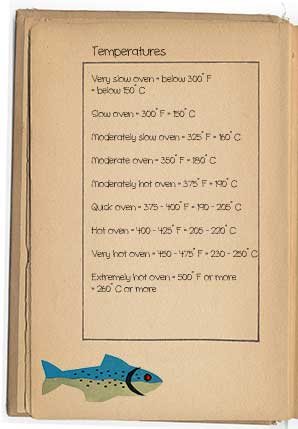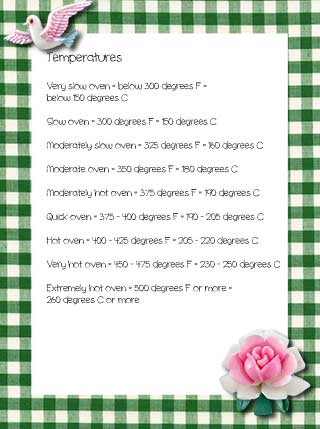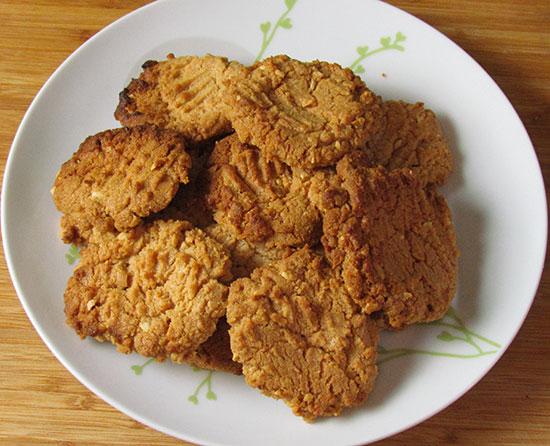

I use a lot of different measurements when cooking from vintage recipes. Getting these right is especially important when baking and can mean the different between a light, fluffy cake and a doorstop.
Below are the weights and measurements that I use. Print this page and keep it handy (the ads and extra stuff won’t print) or you can download pretty versions in pdf format by clicking the images above. Choose from the “books” or “pretty gingham” versions.
Volume
1 US gallon = 4/5 UK (imperial) gallon or 3.78 litres
1 UK gallon (imperial) = 1 and 1/5 US gallons or 4.54 litres
1 US pint = 4/5 UK (imperial) pints = 473ml
1 UK (imperial) pint = 1 and 1/5 US pints = 568ml
1 metric pint = 600ml
1 US quart = 4/5 UK (imperial) quart = 946 ml
1 UK (imperial) quart = 1 and 1/5 US quarts = 1137ml
1 US fluid oz = 1 UK (imperial) fluid oz (near enough) = 30ml
1 US tablespoon = 4/5 UK (imperial) tablespoon = 15ml
1 UK (imperial) tablespoon = 1 and 1/5 US tablespoons = 18ml
1 Australian metric tablespoon = 3/5 oz = 20ml
1 US teaspoon = 4/5 UK (imperial) teaspoon = 1 metric teaspoon = 5ml
1 UK (imperial) teaspoon = 1 1/5th US teaspoons = 6ml
1 salt spoon = 1/2 teaspoon
1 dessert spoon = 2 teaspoons
1 US coffee spoon = 1/2 teaspoon = 2.5ml
1 kitchen spoon = 1 teaspoon
a pinch = 1/8 teaspoon
a vintage dash = 12 drops, although use your own judgment
a modern dash = 3 drops
a dram = 1/8 oz = 3.5ml
1 UK (imperial) gill or jill = 1/4 of a UK (imperial) pint or 142ml
1 US gill or jill = 1/4 of a US pint or 118ml
1 cup (tumbler or glassful) US = 1 cup UK (imperial) = 240ml
1 metric cup = 8 1/2oz = 250ml
1 scant cup = 1 US cup minus 2 US tablespoons = (240ml-30ml) 210ml
1 heaping cup = 1 US or UK imperial cup plus 2 teaspoons (approx) = 1 metric cup or 250ml
1 UK teacup = 6 1/2 oz = 190ml
1 UK breakfast cup = 9 1/2 oz = 285ml
1 wineglass = 1/4 US or imperial cup = 60ml
1 jigger = 1.5 oz = 44ml
1 coffee cup = a scant US/imperial cup = 210ml1 peck = 2 gallons (dry). Use the gallon measurement for whichever country in which your recipe was published – US 7.6 litres – UK 9 litres
1 saucer = 1 heaping US/imperial cup = 1 metric cup = 250ml
butter the size of an egg = 1/4 US/imperial cup or 2 ounces = 56gm
butter the size of a walnut = 1 US tablespoon = 3/4 Australian/UK tablespoon or 3 teaspoons = 15ml
butter the size of a hazelnut = 1 teaspoon = 5ml
Weight
1 US oz weight = 1 UK (imperial) oz weight = 28gm
1 lb = 454gm
1 stone = 6.35kg
1 pennyweight = 1/20 oz = 1.5gm
Temperatures
Very slow oven = below 300 degrees F = below 150 degrees C
Slow oven = 300 degrees F = 150 degrees C
Moderately slow oven = 325 degrees F = 160 degrees C
Moderate oven = 350 degrees F = 180 degrees C
Moderately hot oven = 375 degrees F = 190 degrees C
Quick oven = 375 – 400 degrees F = 190 – 205 degrees C
Hot oven = 400 – 425 degrees F = 205 – 220 degrees C
Very hot oven = 450 – 475 degrees F = 230 – 250 degrees C
Extremely hot oven = 500 degrees F or more = 260 degrees C or more
Packet Sizes
Cans (US)
#1 = 1-1/3 US/imperial cups = 320 ml
#1 tall = 2 US/imperial cups = 480 ml
#1 square = 2 US/imperial cups = 480 ml
#2 = 2-1/2 US/imperial cups = 600 ml
#2-1/2 = 3-1/2 US/imperial cups = 840 ml
#2-1/2 square = scant 4 US/imperial cups = 960 ml
#3 = 4 US/imperial cups = 960 ml
#3 squat= 2-3/4 US/imperial cups = 660 ml
#5 = 7-1/3 US/imperial cups = 1776 ml
#10 = 12 US/imperial cups = 2880 ml
#300 = 1-3/4 US/imperial cups = 420 ml
#303 = 2 US/imperial cups = 480 ml
Chocolate
1 square = 1oz US = 28gm
Gelatine
Envelope = 3 teaspoons or 1 US tablespoon
Yeast
Package of dried yeast = 3/5 oz = 17gm
Cake of compressed yeast = 3/5 oz = 17gm



